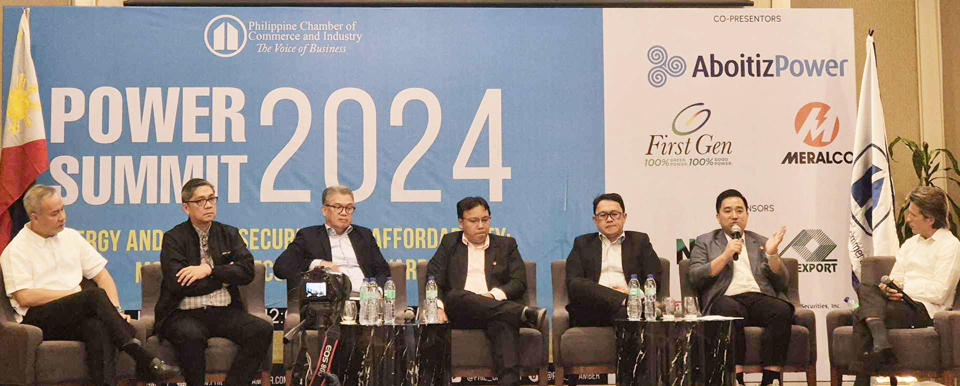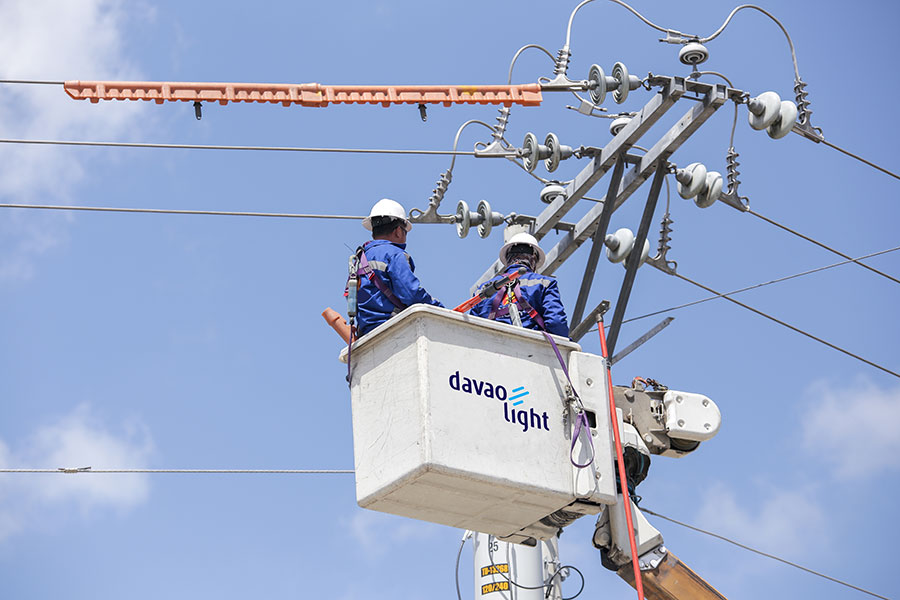In a panel discussion moderated by Aboitiz Power Corporation (AboitizPower) Chief Corporate Services Officer Carlos Aboitiz, different members of the electricity value chain talked about their respective priorities amidst the Philippine energy transition, while underscoring the importance of clear and fair policy guidelines and regulation from the government.
“[There are] risks that the private sector needs to take,” Aboitiz said, referring to private investments in more generation capacities and emerging technologies. “The capital intensity of the industry [highlights] the importance of orchestrating and creating an environment of certainty for investors.”
“If you look at the Philippine Energy Plan, the amount of investments needed is significant. First Gen’s balance sheet cannot do it all alone. AboitizPower’s balance sheet cannot do it all alone,” said First Gen Energy Solutions, Inc. President and COO Francis Giles Puno. “So it does require a lot of collaboration.”
The panel, entitled Perspectives of Industry Stakeholders, featured representatives from the generation, transmission, distribution, and retail electricity supplier (RES) segments. It was held during the Power Summit 2024 hosted by the Philippine Chamber of Commerce at the Makati Diamond Residences in Metro Manila.
Projecting a capacity addition of 92.3 gigawatts of renewable energy projects by 2040 under a Clean Energy Scenario, the Philippine Energy Plan 2020-2040 (PEP) estimated that it will cost P5.8 trillion in investments. In the scenario, renewable energy will have a 35% and 50% share in the power generation mix by 2030 and 2040, respectively.
“Recognizing that the energy sector is a capital-intensive venture, the [Department of Energy] envisages a more active private sector participation and public-private partnerships to pour in the required investments over the planning period,” the PEP said.
Speaking for the transmission segment, National Grid Corporation of the Philippines (NGCP) AVP and Head of Transmission Planning Redi Remoroza said that their priority is to complete all the required transmission facilities to ensure that all committed power plant projects can be accommodated.
Citing a “chicken or the egg” situation — if which should come first: power lines or power plants? — NGCP recommended that the Energy Regulatory Commission (ERC) allow them to build the transmission backbone in identified high resource areas for renewable energy even if the power plant projects are still at their indicative stage.
“In our experience, in the third regulatory period, the ERC allowed us to implement transmission projects if the power plants are committed… But the plant won’t become committed if there are some uncertainties [on whether] the lines will be available,” Remoroza explained.
Meanwhile, Meralco, a part of the distribution segment, said that their priority is to provide reliable service at the least cost possible, as well as help end-users transition to innovations like solar rooftops and net metering.
“We have to adjust and learn to accommodate innovations [like] solar rooftops,” shared Meralco VP and Head of Utility Economics Lawrence Fernandez. “We’re now seeing even end-users injecting power back to the grid, making the distribution system more complex.”
“Because of this, we’ll have to continue to work closely with stakeholders and even policy leaders and regulators,” he added.
For the RES segment, in fulfilling the spirit of the Electric Power Industry Reform Act or EPIRA, they intend to offer competitive, tailor-fit solutions to contestable customers. Contestable customers are large electricity end-users who have a choice of electricity supplier.
“The retail sector does not hold any tangible assets per se, compared to a generator, the transmission operator, or a distribution utility. The bulk of our activity is service to the end-users,” explained Retail Electricity Suppliers Association of the Philippines President Raymond Roseus. “We structure supply contracts that tailor-fit your requirement and we give it to you at a competitive rate.”
The discussion among industry stakeholders was preceded by addresses from Department of Energy Secretary Raphael P.M. Lotilla and ERC Chairperson Atty. Monalisa Dimalanta. Both emphasized the importance of effectively regulating and guiding the electrical power sector, especially since it cuts across different parts of the economy.
“It is important for us to engage with the private sector, especially in the context of a primarily private sector-driven energy and power sector,” Lotilla said. “All the risks are with the private sector, and therefore we have to take into account what if later on there are changes in the regulatory regime, not only in the domestic market, but [also] externally.”



